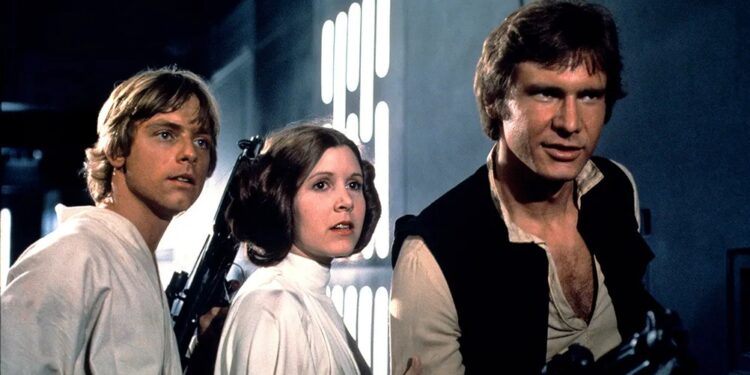On 26th May 1977, audiences queued around the block at cinemas across America to witness something extraordinary. George Lucas’s space opera “Star Wars” burst onto screens, transporting viewers to a universe of lightsabers, droids, and epic battles between good and evil. What began as one filmmaker’s ambitious vision would evolve into the most successful film franchise in entertainment history.
The road to that pivotal May release was anything but smooth. Lucas, then known primarily for “American Graffiti,” faced scepticism from studio executives who couldn’t grasp his space fantasy concept. Science fiction films were considered box office poison, with recent flops like “Logan’s Run” reinforcing industry prejudices. Even 20th Century Fox, which eventually backed the project, had little faith in its commercial prospects.
Lucas drew inspiration from classic adventure serials like “Flash Gordon” and “Buck Rogers,” blending them with samurai films, westerns, and mythological storytelling. He crafted a hero’s journey following young Luke Skywalker, accompanied by memorable characters including the wise Obi-Wan Kenobi, roguish Han Solo, and Princess Leia. The film’s groundbreaking special effects, created by Lucas’s Industrial Light & Magic company, brought starships, alien worlds, and the Death Star to vivid life.
The production itself was fraught with challenges. Filming in Tunisia for the desert planet Tatooine brought unexpe A New Hope
Factual weather and equipment failures. The British crew at Elstree Studios initially dismissed the project as a children’s film. Lucas, perfectionist by nature, pushed through budget constraints and technical difficulties to realise his vision.
When “Star Wars” finally reached cinemas, the response was nothing short of phenomenal. Audiences had never experienced anything quite like it. The opening crawl, John Williams’s soaring orchestral score, and the spectacular space battles created an immersive experience that left viewers spellbound. Word of mouth spread rapidly, with repeat viewings becoming commonplace.
The film’s impact extended far beyond entertainment. “Star Wars” revolutionised cinema technology, pioneering computer-controlled cameras and sophisticated model work. It transformed film marketing, with merchandising becoming as important as box office receipts. Action figures, lunch boxes, and countless tie-in products generated billions in revenue.
Culturally, “Star Wars” entered the global consciousness in ways few films achieve. Phrases like “May the Force be with you” became part of everyday language. The film’s archetypal characters and themes of redemption, sacrifice, and hope resonated across generations and cultures.
Lucas’s creation spawned two immediate sequels, “The Empire Strikes Back” and “Return of the Jedi,” completing the original trilogy. Decades later, prequel and sequel trilogies followed, alongside spin-off films, television series, books, and games. The franchise has generated over $70 billion in revenue across all media.
From that May day in 1977 when audiences first heard the iconic opening fanfare, “Star Wars” has remained a cultural touchstone. It proved that science fiction could be both spectacular entertainment and profound storytelling, inspiring countless filmmakers and captivating new generations of fans who continue to explore that galaxy far, far away.
newshub finance



Recent Comments